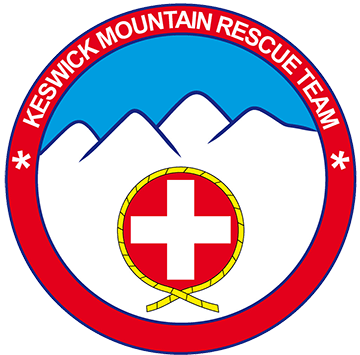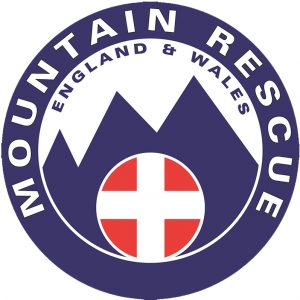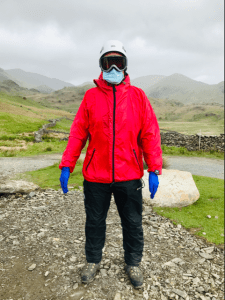In light of the new guidance on exercise and travel here is the latest response from MREW (Mountain Rescue England Wales).
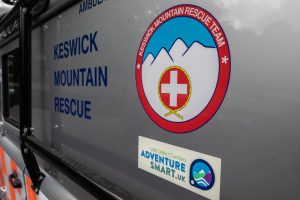
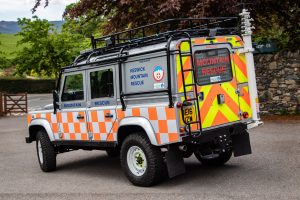
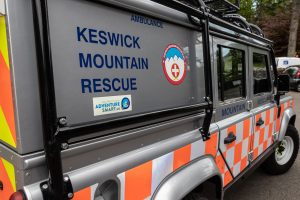
Mountain Rescue asks for caution as lockdown eases in England
Mountain Rescue teams in both England and Wales are anticipating an increase in callouts as lockdown regulations are eased. This is already an issue in England with the changes announced on Sunday, and teams are aware that it could come later in Wales if the situation changes.
“We’d like to thank everyone who has stayed at home and kept themselves and MR volunteers safe in recent weeks,” said Mike France, SEO (Senior Executive Officer) of MREW, “but we know that this is going to change as lockdown is reduced. On call outs, our volunteers will still need to take precautions with every casualty, assuming them to be positive with COVID-19. They need to do this to stay safe and well themselves and to ensure that teams are available when needed through the summer.”
“Any surge in visitors and call outs is going to put a huge additional pressure on mountain rescue volunteers, in addition to the extra work of using PPE and stringent cleaning of kit and vehicles. Our National Parks are sending out clear messages about staying safe and being respectful of rural communities – we would reinforce those. It is essential that everyone heading for the hills takes responsibility for their own safety and should be aware that mountain rescue response times will be longer because of the additional preparations needed. Ideally, just because the government says you can go out, it doesn’t mean you should.”
In recent years, mountain rescuers have played an important role in spreading the #BeAdventureSmart messages. These focus on planning ahead for forecast weather conditions, wearing and carrying the right clothing and equipment and having the skills and expertise for a planned route. These will be even more important this summer and with an additional factor.
“No matter how much exercise people have been taking at home, in their gardens or local to home during lockdown, most of them may not be as hill fit as they were three months ago,” said Mike. “Anyone planning a day out in the hills needs to break themselves in gradually, not do too much and plan a route that is well within their current capabilities.
“Basically, in England there is a change from stay at home to stay alert and we would say Stay Safe. People can travel to undertake exercise, whilst in Wales the regulations have not changed and although you can exercise more than once a day it is only from your home. This difference is really important to understand”.
Key messages
· It is vital that anyone planning a day in the outdoors is #AdventureSmart. Everyone needs to think about their skills and capabilities, anticipate the weather and have the equipment and clothing to stay safe.
· Mountain rescue volunteers are doing everything they can to stay well and keep an effective rescue service available in the weeks and months ahead. We ask for the public’s support in doing this.
· Any call out to an injured walker, climber or cyclist could involve a large number of volunteer team members, especially if a stretcher carry is involved. This means using PPE and risking the volunteers’ own health and that of their families.
· In Wales you are not permitted to drive to a place of exercise.
Below is a very well written perspective from a team member of Coniston Mountain Rescue Team:
We know that many of you will be desperate to get back on the fells and trails, and to get your Lake District “fix”. The relaxation of the Coronavirus lockdown may have been music to your ears, when the Prime Minister stated that it is now Ok to drive any distance to take your exercise. This came as a total surprise to us as a Mountain Rescue Team (MRT), Cumbria Police, Cumbria Tourist Board, The Lake District National Park and also The National Trust. Simply, the Lake District is NOT ready for a large influx of visitors. The hospitality sector remains closed, some car parks may be re-opening, along with some toilet facilities, but this is an enforced opening due to this announcement to cater for those that do decide to come, rather than an invitation.
Why are we, Coniston Mountain Rescue Team, so concerned about the relaxation of the travel to exercise rules? Maybe if we talk you through what happens it may explain why we’re worried.
Firstly, we are all volunteers – most of us have day jobs from which we take time off to deal with incidents during work hours, or time out of the rest of our lives “out of hours”, and secondly most of us have families who we need to protect.
How a rescue might play out during the Covid-19 pandemic:-
1. Paul and Sarah came up from Preston, and have summited the Old Man of Coniston, had their lunch and set off down towards Goats Water.
2. Paul slips and hears a crack from his left ankle, Sarah tries to help, but Paul can’t put weight on his ankle which is at a funny angle anyway. Paul is 15 stone and 6ft 2 tall. Sarah is fit but no way could she help Paul back down.
3. Sarah dials 999, remembers to ask for Police and then Mountain Rescue, the operator takes the details and asks a lot of questions to assess the Covid-19 risk posed by both Paul & Sarah to the MRT, and subsequently to Ambulance and medical staff that will need to treat Paul.
4. In the meantime, four groups of people come by, they all say they’d love to help but haven’t got any Personal Protective Equipment (PPE) and must socially distance themselves by at least 2 metres.
5. The Police alert Coniston MRT to the incident via SARCALL, and the Duty Team Leader (TL) calls Sarah, having sent her a link by text for her to click on to confirm their exact position, and asks more questions, to work out the resources needed.
6. The TL then calls other members of the Leader Group to discuss the requirements and decides a 10 member group is required on the hill, and alerts the Team to that requirement.
7. The Team numbers are depleted anyway, we have a number of people who contribute massively to the Team generally but are over 70 years old, i.e. higher risk group, we have people who may be shielding a family member, or at risk themselves due to underlying medical conditions that normally wouldn’t be an issue. So a team of 10 assemble at the MRT base, plus someone to run the base – this person is important as it helps with coordination of other services letting the hill party get on with the job.
8. All members are briefed regarding the incident, and check all are happy with the unknown invisible risk posed by the incident; the risk of walking up the fell is taken as read and a baseline anyway. All PPE is checked.
9. Team members climb aboard two of the Team’s three vehicles. Why only two when social distancing could be better in 3 vehicles? The need to decontaminate the vehicles on return probably outweighs the advantage of social distancing, and it leaves another vehicle able to respond to any other incidents.
10. Normally the Team would mobilise within 10-15 minutes of this type of call, due to all the pre-checks, personnel checks etc., time elapsed thus far is 45 minutes.
11. The vehicles arrive at the road head, one last check on PPE and kit for the incident, including radios, and the Team sets off for the casualty site. Walking time to site is around 45-60 minutes.
12. The Team can’t call on the Air Ambulance for support as they’re off-line for this type of incident due to staff being redeployed elsewhere in the NHS or due to other priorities and risk factors so cannot support. Similar with Coastguard Helicopters…
13. On site, one casualty carer and one assistant will approach the casualty with as much PPE on as possible, and may well apply PPE to the patient before carrying out a full primary survey, in this case that’s simple, Paul’s ankle is (probably) broken, and there are no other underlying medical factors like a head injury, multiple other injuries or catastrophic bleeding.
14. The casualty carer and helper would normally give Paul some Entonox (pain killing gas) while they straighten his ankle to ensure a pulse at the foot and also maybe a pain killing injection. The injection takes 15 mins or so to work, but Entonox is not given because of the potential risk of contamination. However, the foot needs straightening ASAP to restore the pulse in Paul’s foot. Paul screams as the casualty carer re-aligns the foot (it’s called reducing the injury) to restore circulation and allow for splinting.
15. Paul’s ankle is splinted and although he’s still in pain, it’s less than it was and the painkilling injection is starting to take effect. Time elapsed since Paul fell is now 2 hours 15 mins.
16. The Team moves in and helps Paul on to the stretcher, the stretcher is made of stainless steel and heavy, it is about 2.5 metres long and maybe 0.6 metre wide, usually it takes 8 people to carry a loaded stretcher, they cannot socially distance.
17. The Team carries Paul down to the Walna Scar road, where they’ve asked a North West Ambulance Service land ambulance to meet them to reduce potential contamination at base. The carry down has taken 2 hours, so now it’s 4 hrs 15 since Paul fell. Paul is transferred to the Ambulance and taken to Furness General Hospital. Sarah can’t drive, but can’t go in the Ambulance either. How can the Team get Sarah re-united with Paul and then how do they both get home to Preston when Paul is fixed? What happens to their car? In normal circumstances we can fix these issues, not so easy in the Covid-19 pandemic.
18. The Team returns to base and starts to decontaminate the stretcher, the vehicles, the non-disposable medical equipment, the splint and themselves. Jackets and other clothing are all bagged ready to go in their washing machines when they get home, which takes a further 1 hour 15 minutes. Total time elapsed 5hrs 30 minutes. Total man hours 10 folk on the hill plus 1 running base = 60.5 man hours.
19. Paul is admitted to Furness General Hospital after a wait of 1 hour at A&E. He is taken to cubicles and X Rayed to understand his ankle injury better. He is also routinely tested for Covid-19. Paul’s ankle needs an operation to pin it as the break is a bad one.
20. Paul’s Covid-19 test comes back positive. Oh dear! Paul is asymptomatic, he has the virus but is either naturally immune or has not yet developed symptoms. The message is passed back to Coniston MRT, who then have to check the records of those on the incident. Every one of them, the ten people on the incident and the base controller, must now self isolate and so must their families, so now we have maybe 35 people all having to self-isolate. Plus possibly the Ambulance crew and their families.
21. Three days later Eric from Essex decides he wants to come to Coniston to do the 7 Wainwrights in the Coniston Fells. He sets off, and completes Dow Crag, the Old Man, Brim Fell along to Swirl How and Great Carrs and across to Grey Friar, then on up to Wetherlam. Eric puts his foot down on a rock, the rock moves and Eric is in a heap on the floor, his foot is at a funny angle…he gets his phone out and dials for Mountain Rescue… but there are only three people available from the Coniston Team now, so the decision needs to be taken by the Coniston MRT duty leader which Team to call to support, Neighbouring Teams are Langdale-Ambleside and Duddon & Furness MRT’s. The issue is, they’re in the same situation as Coniston with people self-isolating due to potential contamination, or their members are keyworkers in the NHS and can’t deploy on MRT incidents.
So – we’re asking you to think twice, even three times before you embark upon travelling to the Lake District for your exercise. The risk, however small, is real, and I write this as a MRT member for over 30 years with probably around 1000 incidents under my belt, I know, accidents happen.
